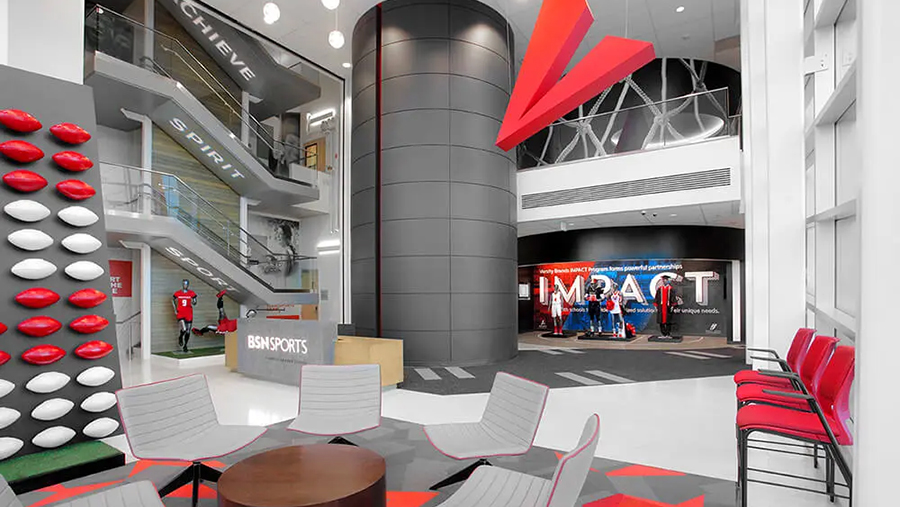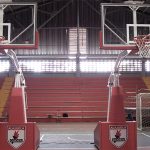S&P Global Ratings upgraded the debt ratings of Varsity Brands, the parent of BSN Sports and Varsity Spirit, as sales and key credit metrics continue to improve.
S&P said the improvement reflects “solid demand in both segments, management’s effective execution in expanding the businesses, and the wind-down of significant legal and restructuring cash expenses.”
S&P raised Varsity Brand’s issuer credit rating on the company to ‘B’ from ‘B-‘. Concurrently, the issue-level rating on the company’s senior secured term loan facility was raised to ‘B’ from ‘B-‘. The recovery rating remains ‘3’, reflecting S&P’s expectation for meaningful (50 percent to 70 percent; rounded estimate: 55 percent) recovery in the event of a payment default.
The stable outlook reflects S&P’s expectation that Varsity will continue to execute its growth strategy, increase revenue, maintain S&P Global Ratings-adjusted EBITDA margin in the 15 percent area, sustain leverage below 6x, and generate positive free operating cash flow (FOCF).
The upgrade comes as Moody’s, on July 1, similarly raised its ratings on Varsity Brands.
S&P said in its analysis, “The upgrade reflects our expectation that demand for Varsity’s businesses will remain strong, supporting continued profit expansion and credit metric improvement. We forecast Varsity’s reported revenue will increase about 6 percent and adjusted EBITDA about 12 percent in 2025. Demand for its BSN Sports segment is solid as in-person sports participation has exceeded pre-pandemic levels, along with more events and higher participation rates in its Varsity Spirits segment. Successful investments in its digital sales platform and supply chain capabilities (including shorter delivery times for private-label products), which we believe have enhanced the buying experience for its customers, further support these trends.
“We expect Varsity will sustain adjusted EBITDA margins of about 15 percent in 2025 and 2026 because of a better product mix, primarily from increased penetration of private-label apparel sales and new licensing partnerships with large apparel companies, both of which carry higher margins. Further, we believe the company’s material legal liability overhang of the past few years has been substantially reduced, following the resolution of its last remaining antitrust class action lawsuit (which alleged the company monopolized the nationwide cheerleading competition and apparel markets) and certain civil negligence cases related to alleged misconduct by third parties. Consequently, we expect legal expenses (which we do not add back to adjusted EBITDA) to be materially lower going forward compared to recent years.
“Varsity Brands should offset most tariff impact through pricing increases and other remediation efforts. The majority of its tariff exposure stems from imports into the U.S., primarily from East Asia (including China) and Latin America. We understand the company pulled forward inventory purchases earlier in 2025 ahead of tariff implementation, which we expect will limit headwinds in 2025 profits. In our base-case forecast, we assume tariffs will impair gross margin by 100-150 basis points in 2026. Given the high unpredictability around policy implementation by the U.S. administration and responses, our baseline forecasts carry a significant amount of uncertainty.
“We view Varsity Brands as well-positioned to offset tariff headwinds by increasing prices to customers, given its strong dealer relationships, service quality, and market leadership in the cheerleading segment. Additionally, the company is actively exploring opportunities to streamline its supply chain (including reducing exposure to China) to mitigate the impact on margins and cash flow. This should allow it to maintain adjusted EBITDA margins of about 15 percent.
“Our base-case forecast assumes reported FOCF of about $50 million in 2025 and upward of $150 million in 2026. Our estimate for 2025 includes material outflows related to the legal settlements. We expect adjusted leverage will improve to 5.7x at year-end 2025 from 6.4x at the end of 2024 and further down to about 5.5x at year-end 2026, primarily from EBITDA growth. Our forecast does not include additional debt repayment aside from the $24 million annual mandatory principal amortization payments. Given our expectations for substantial FOCF and adequate sources of liquidity, which include $57 million of balance-sheet cash and $154 million of asset-based lending (ABL) lending availability (net of borrowing base availability and outstanding draws) as of March 29, 2025, the company could repay debt and accelerate deleveraging.
“Varsity’s business is highly seasonal and closely tied to the North American school sports cycle. Its revenue depends significantly on the discretionary nature of BSN’s sports apparel/equipment business and Varsity Brands’ cheerleading uniforms, camps, and competitions business. From a sales perspective, while each of these segments experiences significant seasonality individually, their peak periods are somewhat offsetting when viewed in aggregate. However, the company’s cash flow remains heavily weighted toward the second half of the year. Additionally, it relies heavily on school athletic budgets and parent booster clubs to increase its revenue. While our economists forecast U.S. real GDP will expand 1.7 percent in 2025, we anticipate end consumers will likely rein in spending if purchasing power deteriorates due to an uncertain macroeconomic environment.
“Recent federal budget cuts could affect the BSN business, which relies disproportionately on school athletic budgets for funding. However, we believe the company will be partly shielded from budget cuts as its products are primarily geared toward core sports with high participation rates, which are less likely to face cuts and more likely to receive booster club support.
“The stable outlook reflects our expectation that Varsity’s adjusted leverage will steadily improve but remain above 5x in the next year. We also expect the company to continue to increase organic revenue at a mid-single-digit percentage rate, maintain EBITDA margin in the 15 percent area, maintain adequate liquidity, and generate positive FOCF. We also assume Varsity will mitigate most potential tariff headwinds.”
















